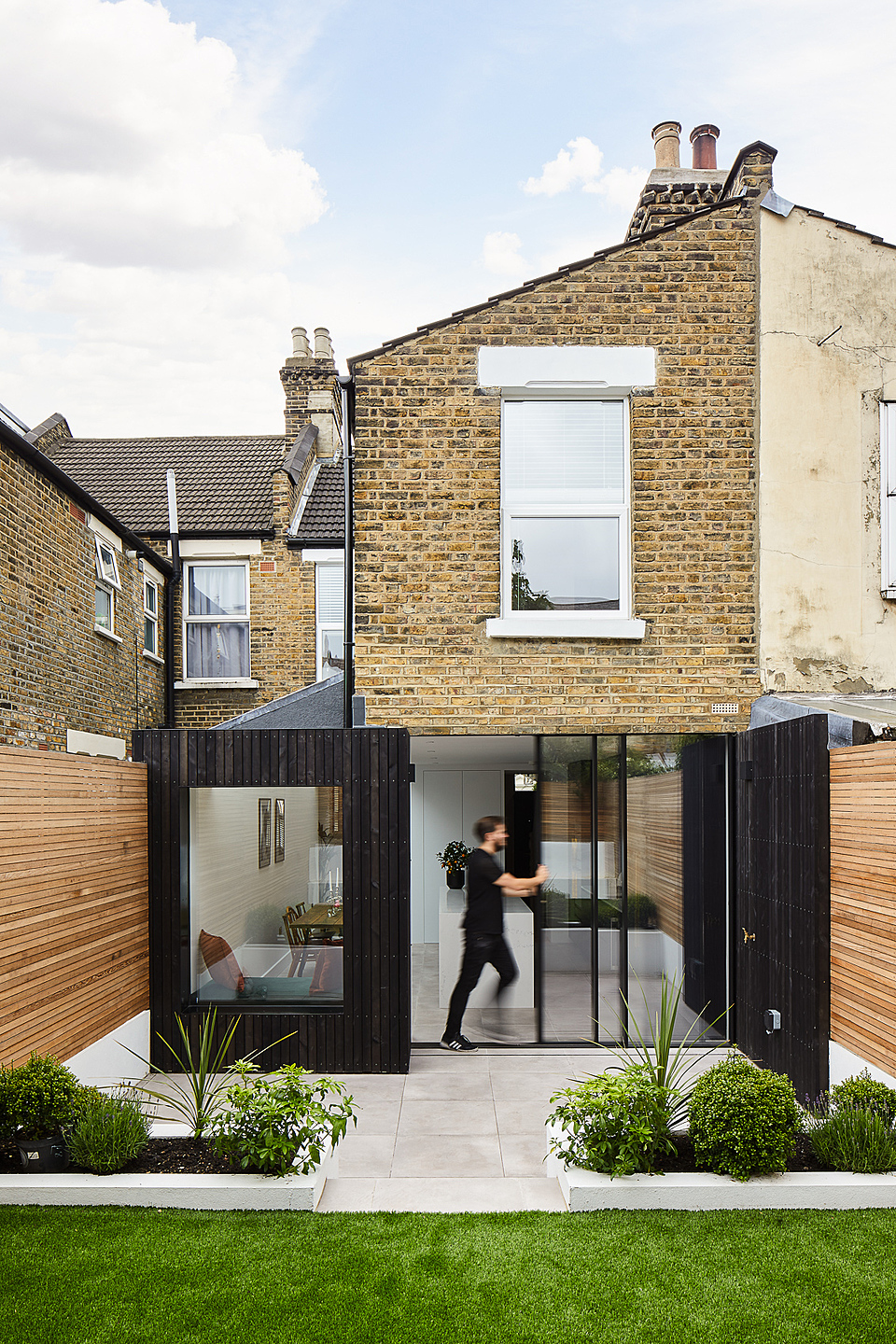Your Guide - Extensions
Share
Copy Link
Extensions are a great way to get a bigger house without the hassle of moving! Not only are they likely to add value to your home, but by creating a much larger space it will change the way you live.
Our handy guide is here to help get you started.
If you are thinking about an extension in the near future and need some help finding an architect or designer, we can match you with the most suitable ones for your project.
Find an architect or designer
What kind of extensions are there?
There are three common types of extension:
Side return
These are extremely popular for Victorian and Edwardian terraced properties. The pathway at the side of the property, which is often wasted space, is used to extend the original space. It may seem that you are only adding on a few feet but this can dramatically change your existing space and how you use it.
Rear extension
This is the most common extension in the UK and ideal to create a new open plan kitchen. The rear extension goes across the whole length of the house, out into the garden. It will not only add space to your home but transform how you use the original space, such as taking a small kitchen and lounge and transforming them into one large sociable space.
Wrap around extension
This combines the side return and the rear extension and will significantly change the size of your home. These are often combined with a double storey extension.

Stunning rear extension by Sophie Nguyen Architects
Do I need planning permission for my extension?
Many extensions are considered to be within permitted development which means they don't require planning permission. Here are some general guidelines on what is permitted:
- If your extension is less than half the area of land around the original house. Double check if there have been any extensions carried out before you owned the property.
- You can normally carry out a single storey extension for an attached property by 6 metres and detached property by 8 metres. If it's more than a single storey, you cannot extend beyond 3 metres.
- Two storey extensions should be no closer than 7 metres to the rear boundary
- The roof can be raised to the highest part of the original roof but not beyond
- The height of a single storey extension can be up to 4 metres within permitted development
- The side return is a single storey, no more than 4 metres in height and no more than half the width of the original house
- The extension should not be forward of the original building
- The material of the extension is in keeping with the original style. Similarly, the new roof pitch must match the original style in a one storey extension.
- Any side windows have obscure glass
There are some circumstances where you should always seek planning permission, such as if you live in a conservation area, flat or maisonette. You should always consult your local authority and confirm whether your plans are within the permitted development.
Do I need building regulations approval for my extension?
Even though you may not require planning permission you always need to ensure the extension adheres to building regulations. This is to ensure the extension meets the health and safety requirements. Building regulations will assess the new structure, checking things such as fire resistance, drainage, insulation and ventilation.
More and more common in extensions are large glass walls and windows, so building regulations will review the energy efficiency of all glazing. Building regulations do not supervise the builders work but ensure it meets a minimum standard.
To apply for building regulations approval, you can either submit a Full Plan Submission or a Building Notice.
- The Full Plan Submission is where you pay a fee and the building inspector will visit the site at various stages of the work
- Alternatively by submitting a Building Notice, the planning department will give you 48 hours notice to visit the site and will visit throughout the process. You do not need to submit plans for this process but it does carry more risk as you do not have pre-approved plans to work off.
It is standard for your architect to work with a structural engineer and submit the building regulation plans for you, but do confirm that they do.
Your architect will also guide you on whether your home falls within the Party Walls Act 1996 too. Note this only applies in England & Wales.

Rear extension by Rees Architects
Who will carry out my extension?
You can project manage the whole process yourself and choose how involved you want to be at each stage. This would include:
- A qualified architect (ARB) or architectural technologist (CIAT) are good options to kick off your project, particularly if you need to apply for planning permission
- If you need design inspiration on your extension, a qualified architect (ARB) is a great option. Some architects are also members of RIBA who are considered the most experienced, design lead architects.
- If you have a clear brief then an architectural technologist is a great option. Qualified architects (ARB), and particularly RIBA members, will typically charge higher rates due to their skill set and training, so only use one if they are right for your project, otherwise opt for an architectural technologist (CIAT).
- The architect or architectural technologist can then submit your plans for planning permission (if required) and work with a structural engineer to produce the structural drawings and calculations that are required for building control.
- The plans will then be passed to the builder to complete the project. Some builders will have specialists in all areas including brickwork, roofing, plumbing and electrics and will carry out all of the build. Alternatively you can hire separate tradesmen yourself. This option will require you to project manage everything and ensure the work comes together at the right time
Alternatively, you could hire a specialist extension company who will manage everything from the design, structural calculations and through to the build. The downside to a specialist extension company is that you will likely pay a premium as they offer an end to end service. Additionally, the builders can be outsourced and you may have less control over the quality of their workmanship.
What is the cost of an extension?
The costs vary greatly depending on the size of the extension, the quality of finish, whether you are installing a kitchen or bathrooms, and also where you are located in the UK. We recommend that you use our cost calculator to get a high level estimate.
Extension cost calculator
Before going ahead with any work, be clear on how you will fund it.

Extension by Mulhern Iremonger Design Studios
How long will it take to complete my extension?
A standard single storey extension will take between 10-12 weeks, however expect longer if it's a large extension or a two storey. Expect another 4-6 weeks to fit a kitchen or bathroom and to decorate your home.
Do expect a lot of disruption. The initial build will be external but once the builders have knocked through, there will be a lot of dust and mess. It will be worth it in the long run, so keep this in mind!
Anything else to consider?
Consider how your extension will impact the light in your neighbours home. If you seriously block light into a window, and the window has been there for more than 20 years, they can take legal action.
As well as the right of light, you must also consider the Party Wall Act and serve notice to your neighbours if this is applicable to your home.
It's also easy to get carried away and invest a lot in an extension. Before you do, check with a local estate agent how much value it is likely to add and that may determine the level of your investment.
If you need some help finding an architect or designer, we can match you with the most suitable ones for your project.
Find an architect or designer
Published: May 13, 2020



